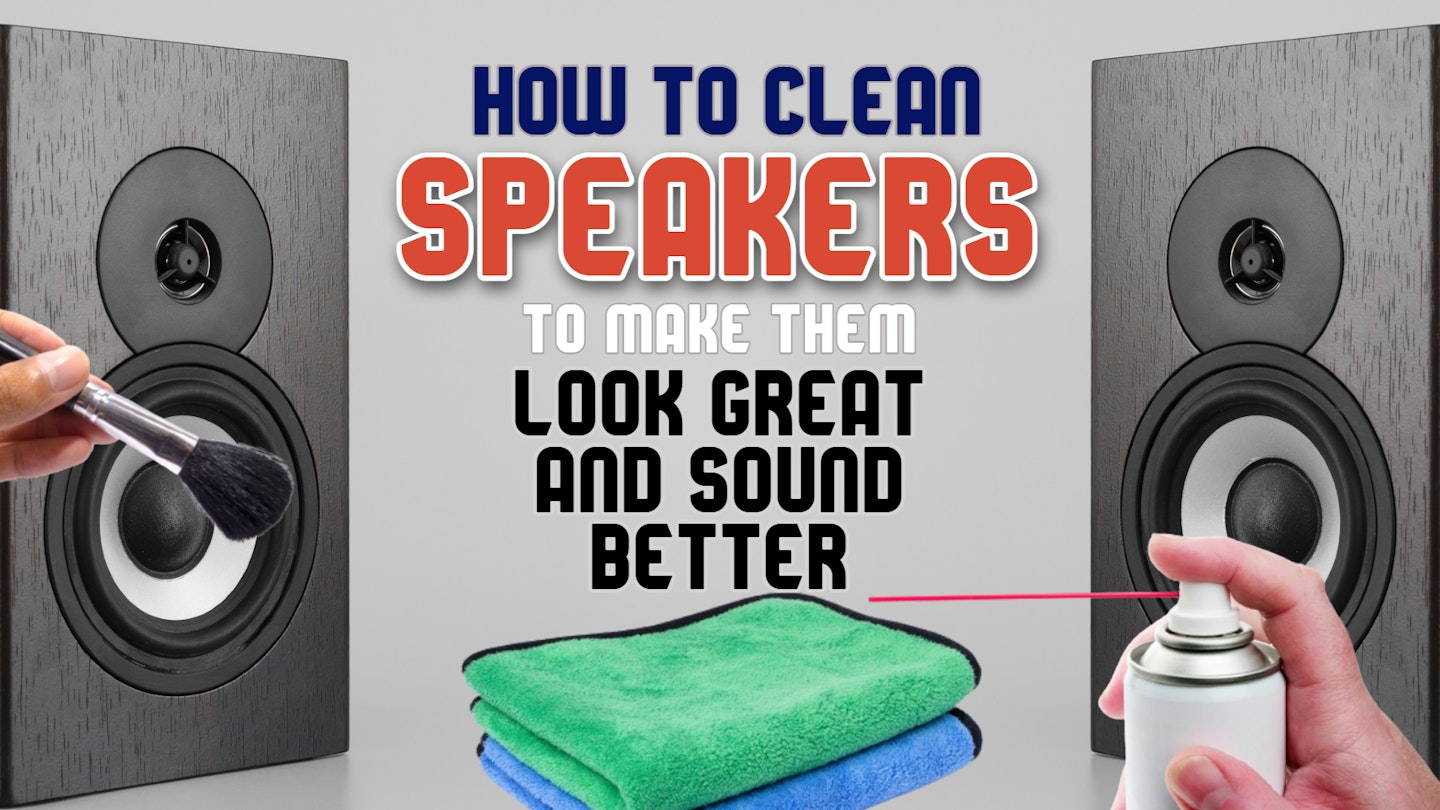There’s no doubt that one of the great things about owning a decent set of speakers is how they look. It’s a tough admission for some audiophiles to make, but many of us choose our speakers based on their design almost as much as their performance. Ideally though, choosing one of the best speakers for music results in a perfect balance between audio quality and the visual design of the cabinets and cones. And here comes the spanner in the works - dust, and how to clean speakers without damaging them.
The experts at What’s The Best love their hi-fi kit and want the best out of their music. We’ve looked at (and own) a wide range of audio tech - both portable Bluetooth speakers and speakers best suited to vinyl and more. They all come with different designs and finishes. But thankfully there’s a simple set of tried and tested methods for cleaning them. If you’re not sure about how to clean cones, domes and grills, we’ve got you covered.
So, here’s what you’ll need...
Whereas most cleaning is a duster and some surface spray, speakers are a different matter. Not only are the cabinets often laminated with veneer or other faux-wood finishes, but the fabric grills (and the woofers and tweeters behind them) are notorious for collecting dust. Your expensive new bookshelf speakers can soon end up looking worse for wear. So, you’re going to need some extra supplies and techniques to bring them back to peak condition.
• A microfibre (lint-free) cloth (three is best)
• A soft brush (often used on camera lenses or for makeup)
• A can of compressed air
• Some household detergent (washing up liquid) and some warm water
And here’s what you won’t...
• Never use a vacuum cleaner of any kind on the cones or domes.
• Don’t use household surface sprays or polishes
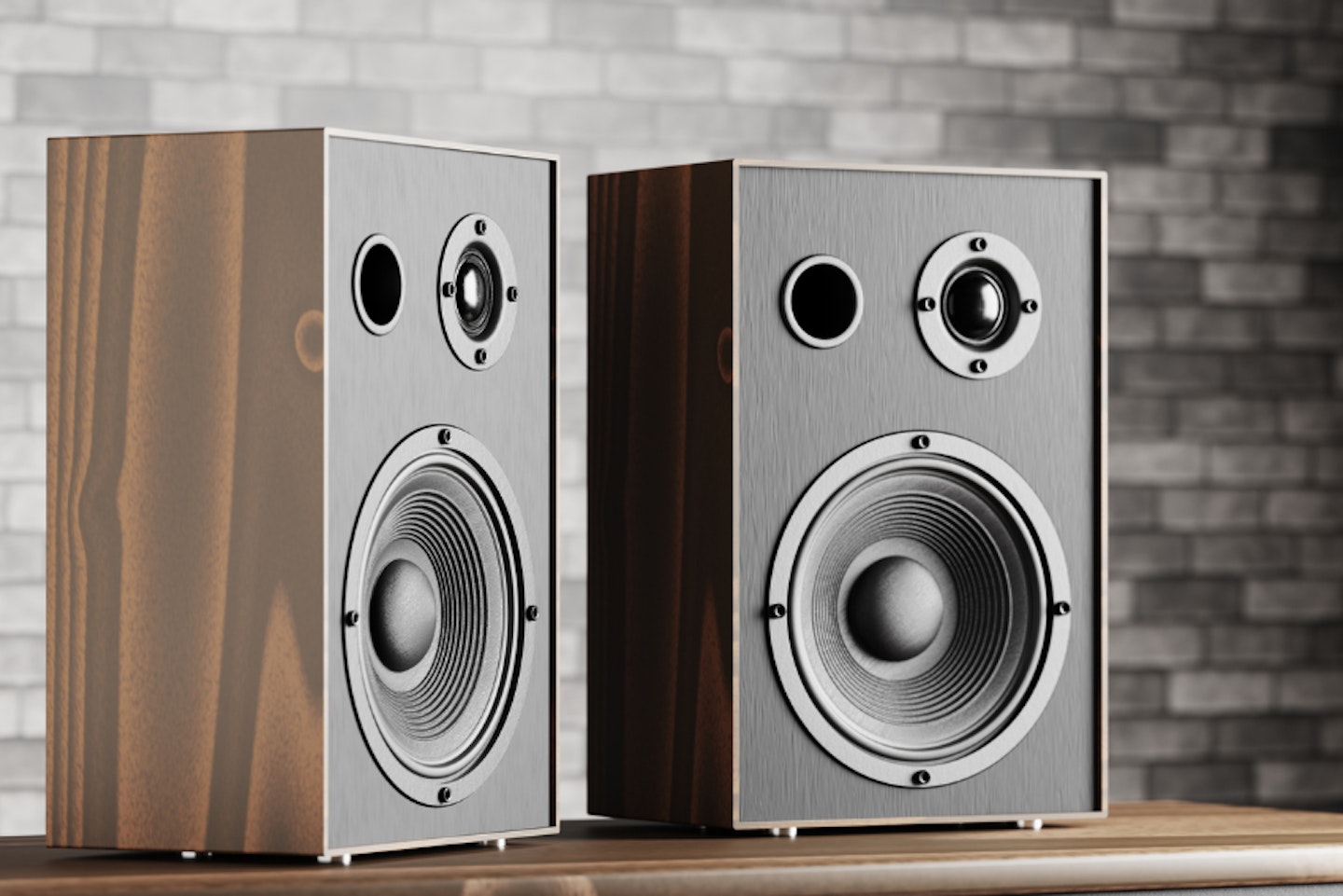
Why and how to clean speakers
Is cleaning speakers worth it?
It’s a fair question. After all, anyone who has accidentally put the household vacuum nozzle onto a tweeter and heard a giant ‘pop’ might be scared off. They might be worried about what cleaning products and techniques to use. While it's true that certain parts of a speaker are delicate, using the right technique is perfectly safe.
So, here are the main benefits of regularly cleaning your expensive (or budget) hi-fi speakers, and how to do it.
1. Make cones and domes sound better
Granted, it would take quite a build-up of dust to seriously affect the sound your speaker produces from its drivers. But, the key to avoiding this is to prevent it in the first place. Many people believe that the vibrations from playing loud music are enough to keep them clean. But you would need to be doing this daily to prevent build-up over time - even with powerful floor-standing speakers. Even keeping a grille attached won’t prevent dust ingress. It might hide it, but ‘out of sight, out of mind’ isn’t a wise credo for anyone who likes to maintain their audio gear.
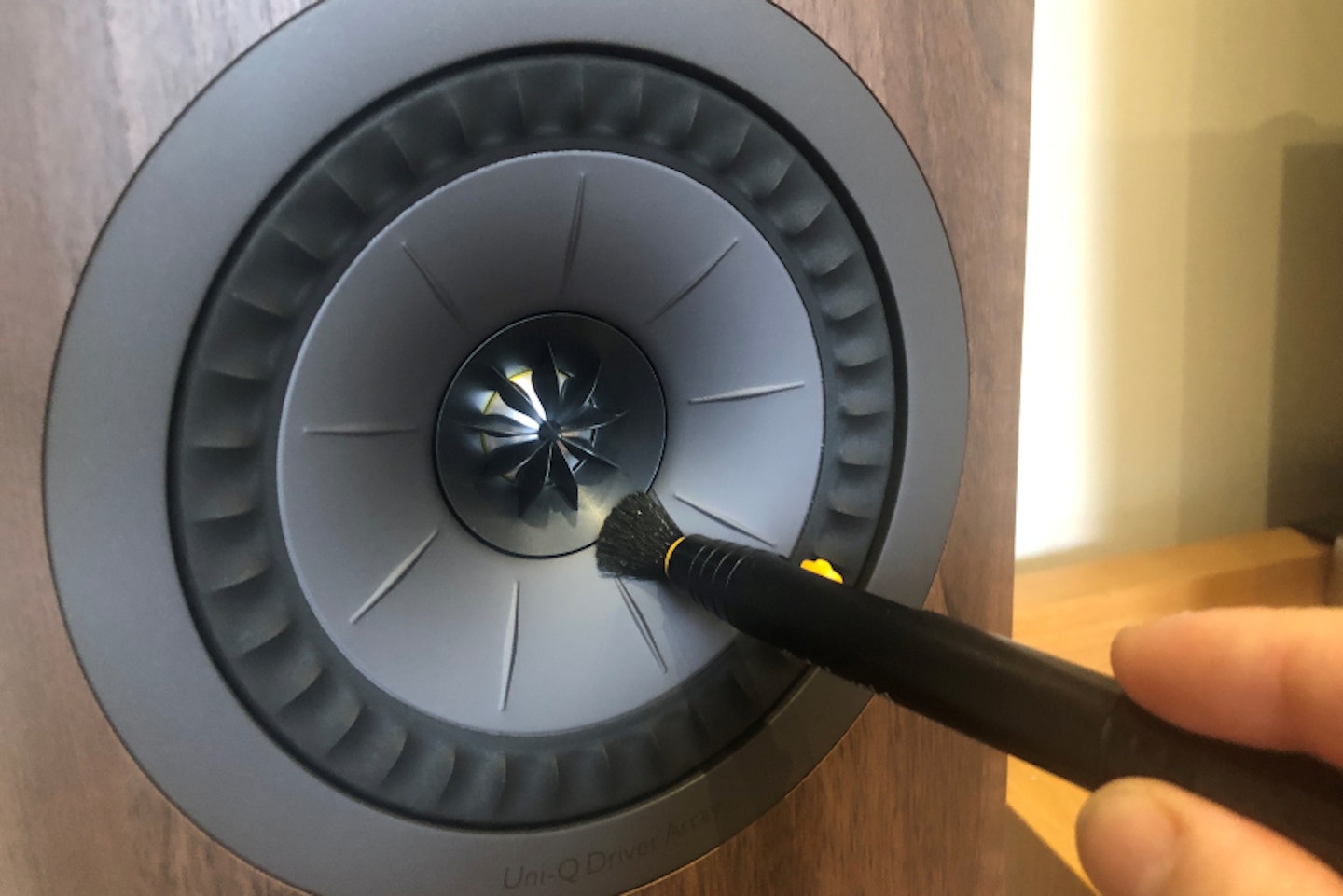
How to clean speakers: Cones
As the largest producer of sound, the cone (or woofer) is large and concave - not too helpful where dust is concerned. They can be made of various materials, from exotic and relatively tough ones like kevlar to lightweight composites like paper or wood. So, it’s important not to get them wet. Never use a slightly damp cloth on a cone unless you know it’s a tough material.
Instead, get the soft brush and gently brush from centre to edge, starting at the top of the cone and work downwards. This will remove the worst of the dust. If you still have dust trapped in hard-to-reach nooks and crannies, use your can of compressed air. Don’t get the nozzle closer than six inches from the speaker. And definitely don't tip the can sideways or upside down as this can release the air in liquid form.
Lastly, if you are confident that your cones are made from rigid wipable material like carbon fibre, use a lightly dampened cloth to give things a gentle clean. Otherwise, a brief and extra-careful last pass with a dry microfibre cloth finishes the job.
Top tip: Avoid a feather duster. It may seem like a great catchall - but it's also very good at putting dust into the air and spreading it around. You're likely to disperse dust back onto other areas of your speaker.
How to clean speakers: Soft domes (tweeters)
Much the same as the above, use your brush to gently clean away dust. As the domes are normally soft, pay special attention when doing this.
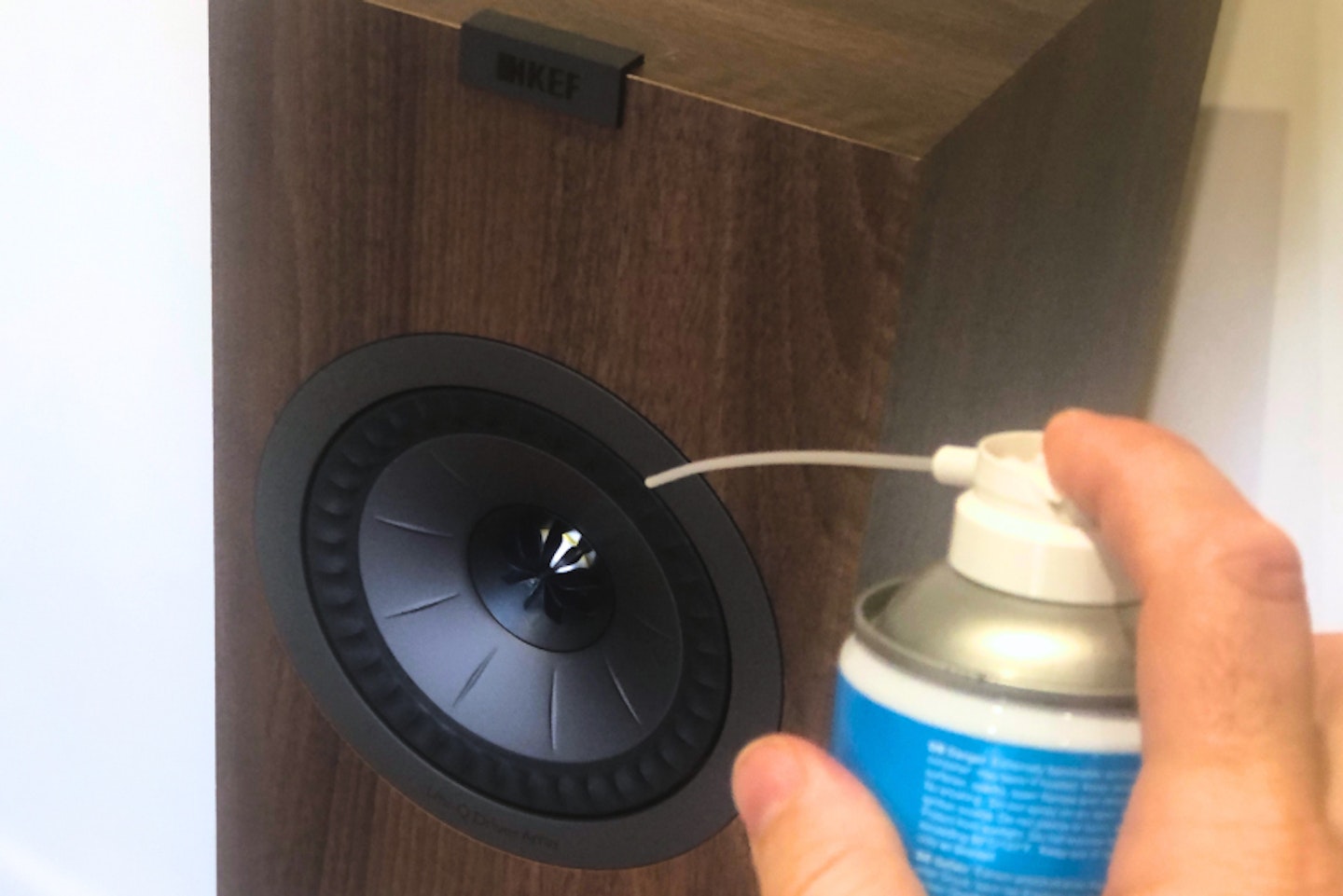
2. Make fabric grills look black again
If your speaker cones are behind a fabric grill, you may have noticed they’re not as black as they once were. That’s a fine layer of dust deposited through the air. You might also have visible dusty finger marks in the fabric too. We’ll show you how to bring those back to black.
How to clean speakers: Fabric grills
These are notoriously easy to damage. The temptation is to remove the grill (normally soft studs or clips in each corner, or even magnets) and place your hand or finger behind the material while you wipe the front. Resist the urge to do this - the fabric can get distorted and your cleaning might even scuff the surface. Instead, give them a gentle clean with a lint roller - the type you use on clothes. This will remove surface dust and other fibres. You could just stop there if things look good, but if not…
Remove and lay the grill face-up on a clean, flat surface. If you have a vacuum cleaner with a low-power setting (such as for use on curtains) you can attach a small brush-ended nozzle. Gently brush this over the fabric. Be careful not to push downwards onto the fabric - trust the very end of the brush to do the work. If you’re not going to do this, skip to the next step: Your trusty slightly damp microfibre cloth.
Again, make sure not to press your fingers into the fabric, and gently run the cloth over the fabric. If you do find you have marks or ingrained dirt you may have to be a little braver. Use a very small amount of washing-up detergent in your water and use a gentle circular motion with your damp cloth. Leave it to air-dry and your grills will look clean and refreshed.
How to clean speakers: Hard grills
Much easier than fabric, many plastic grills can be removed and washed with warm water. A wipe-over with a clean cloth will often do. If you have a metal grill try not to get it excessively wet. That way any unpainted surfaces won’t develop any rust later This is particularly true for vintage speakers.
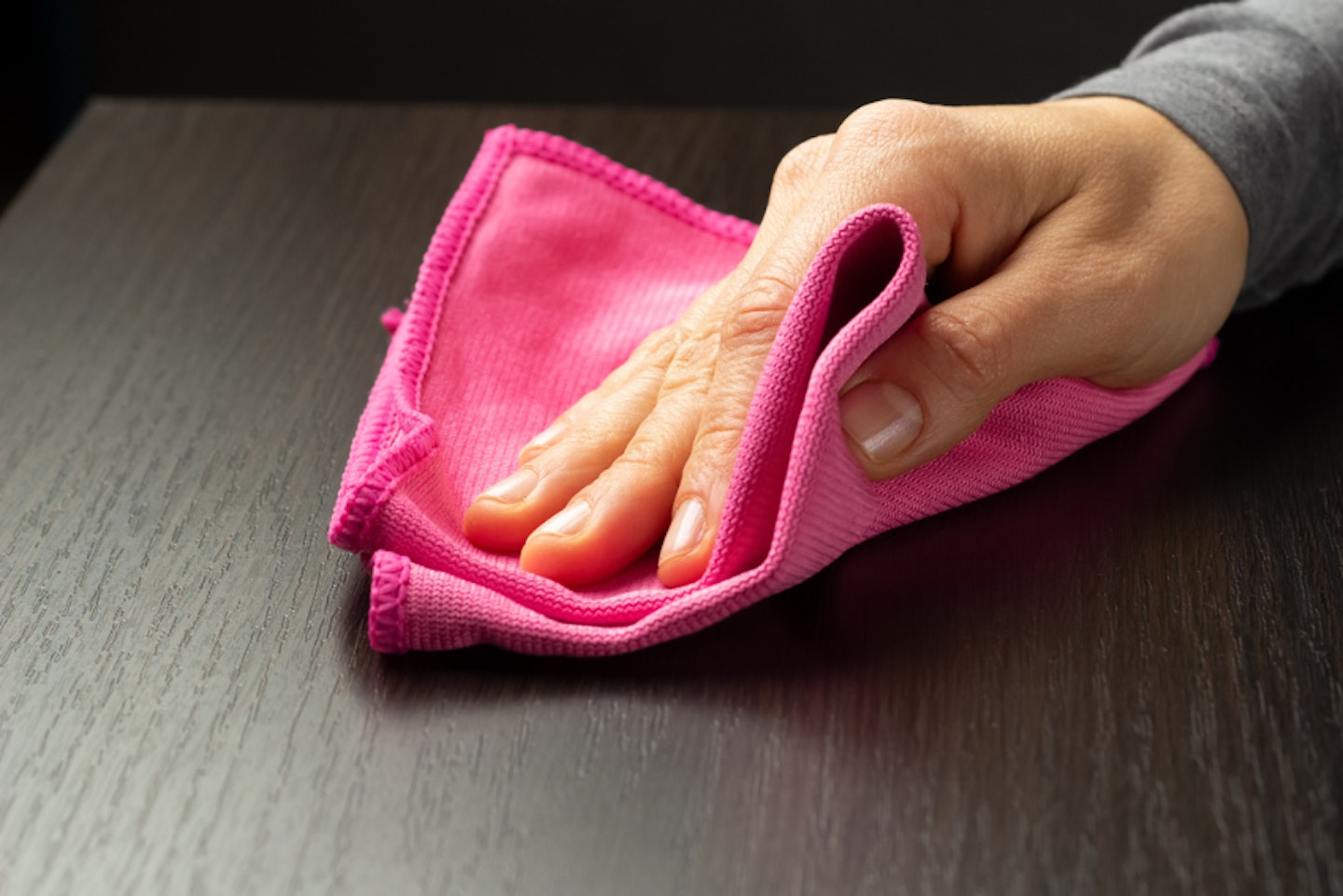
3. Make cabinets and speaker terminals look like new
Owners of speakers with black cabinets know this all too well. The accumulation of dust really does turn your expensive equipment into something that looks unloved. Speakers are, after all, often placed front and centre to be seen as well as heard. So, keeping them looking like new is going to improve your room and your appreciation of your speakers.
How to clean speakers: Speaker cabinets
While it’s tempting to blast your wood-effect speakers with a can of Mr. Sheen for a quick dust and shine-up, it’s not recommended. Household furniture polish contains various additives that can be a problem for cones as well as thin veneers or vinyl coatings on cabinets.
All you need here is a brush nozzle on your vacuum set to low power (or your trusty can of air). This will get stubborn dust from crevices and out of any raised details like brand decals. Then grab a clean and slightly damp microfibre cloth. Wipe the top of the speaker first from front to back to avoid putting dust onto the cones. If your speaker cabinet has a wood texture to it, follow the direction of the grain. If you have stubborn dirt you may need to use a small amount of detergent in your warm water. If you do this, always use a cloth with clean water to remove any detergent residue.
Finally, clean the sides from top to bottom in the same way. Then use a clean and dry microfibre cloth to dry off any excess dampness. Never use too much water on your cloth - if you have a genuine wood finish you could risk damaging it.
Top tip: Don’t forget to use the same damp cloth technique to gently clean dust, debris or worse from any bass reflex ports. They’re often the one area that collects debris that users forget. This can lead to muted bass response if larger objects have made their way in there.
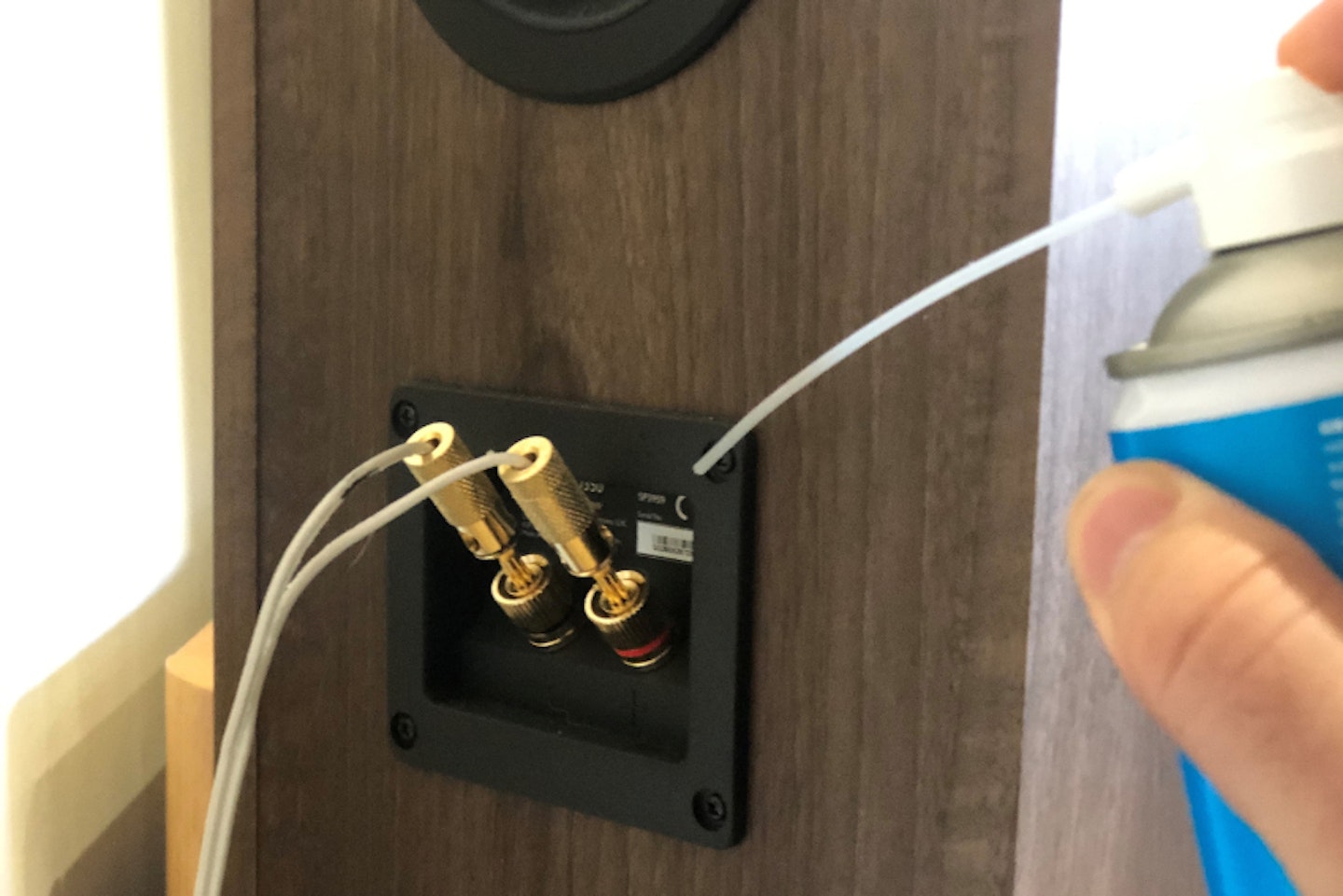
How to clean speakers: The terminals
The often-forgotten terminals on the back are sometimes placed inside a recessed panel. This can be a pocket for lots of dust and even cobwebs. Keeping speaker terminals clean means that unplugging and replugging doesn’t introduce dust into the terminal (or cabinet) itself.
Firstly, leave your speaker wires connected. Also, make sure your hi-fi isn’t powered on - if you accidentally short across your terminals you could damage your amplifier.
Then use your compressed air to really blast away the dust from around the terminals. Include any recessed areas at the back of the speaker. With the bulk of the dust gone, unplug your speaker wires and use a clean (or slightly damp) cloth to give the area a polish. Plug your wires back into the correct terminals and you’re good to go.
When you’re all done
Sit back and enjoy looking at, and listening to, your dust-free speakers. Taking care of audio equipment can be a satisfying job to actually do as well as enjoying the end results. The tools are cheap to invest in and the techniques are easy to get right. Many of the basic techniques mentioned here are also great for all kinds of speakers. That includes TV soundbars, smartphones and portable speakers with fixed grills. A brush or some compressed air through those grills can really improve things.
So, the next time you see someone getting close to a cone or a dome with the business end of the Dyson - you know just what to do.
Chris Duffill is a Tech Product Writer for What's The Best. His background includes writing, editorial, marketing, design, video production and photography.
He specialises in home entertainment and audiovisual tech, including speakers, amplifiers, turntables, streaming media players, and TVs. He is also one of our resident experts in computing (PCs, tablets, smartphones, smartwatches), DSLR photography and all kinds of digital cameras. He also writes about retro gaming, game consoles and various electronic gadgets. If it plugs in, lights up or makes a noise, he’ll write about it.
Subscribe to the What’s The Best Newsletter to keep up to date with more of the latest reviews and recommendations from the rest of the What’s The Best team.
